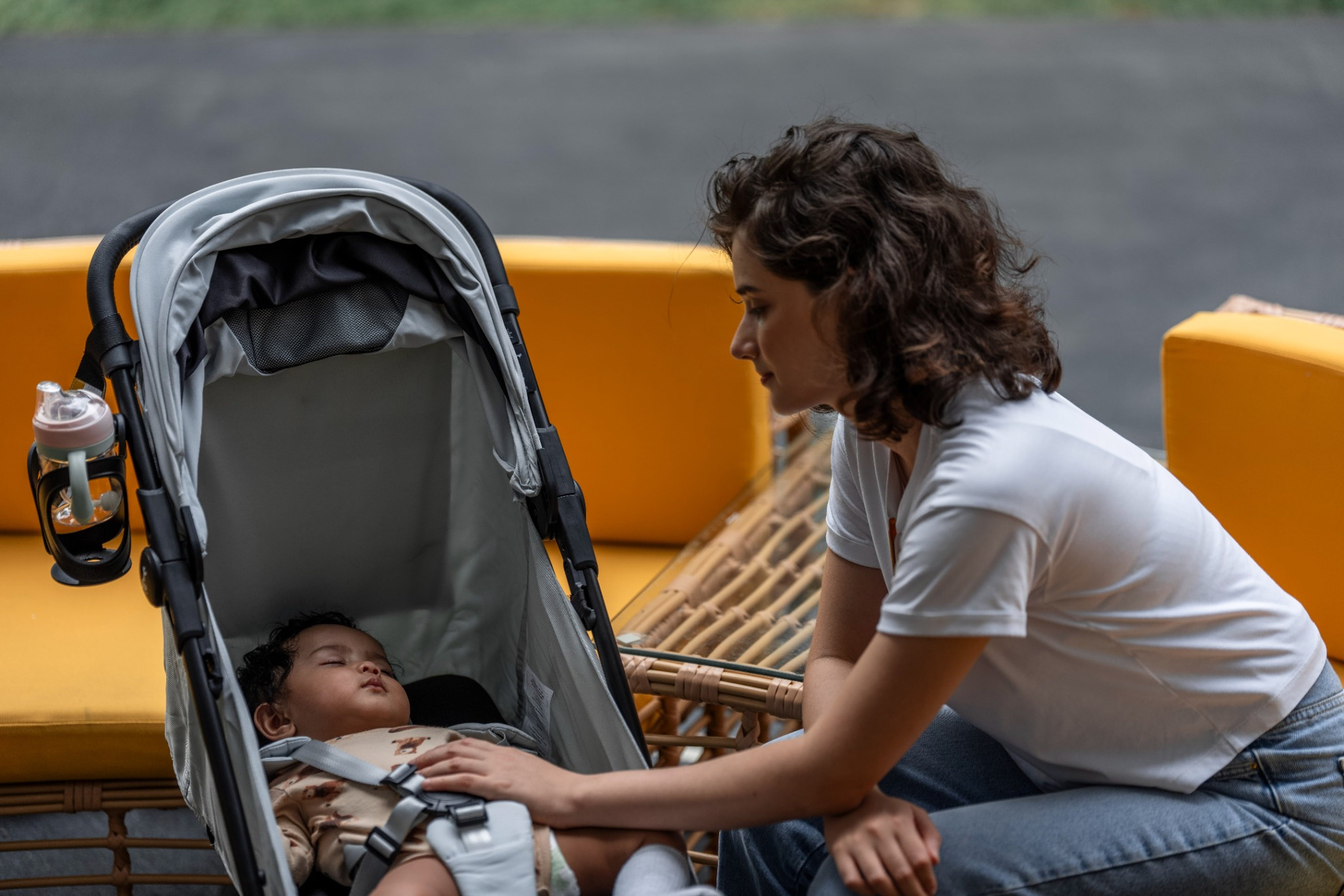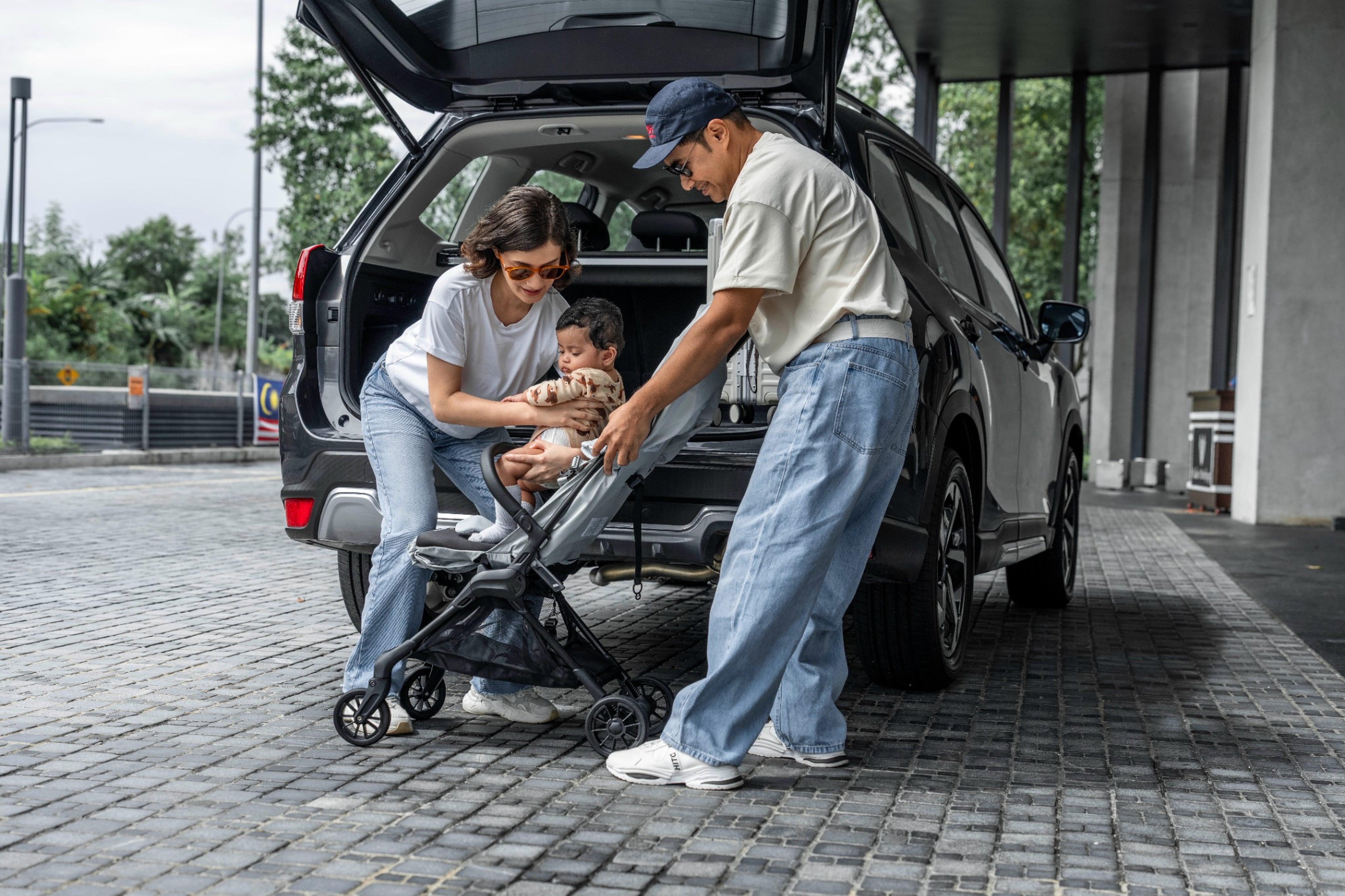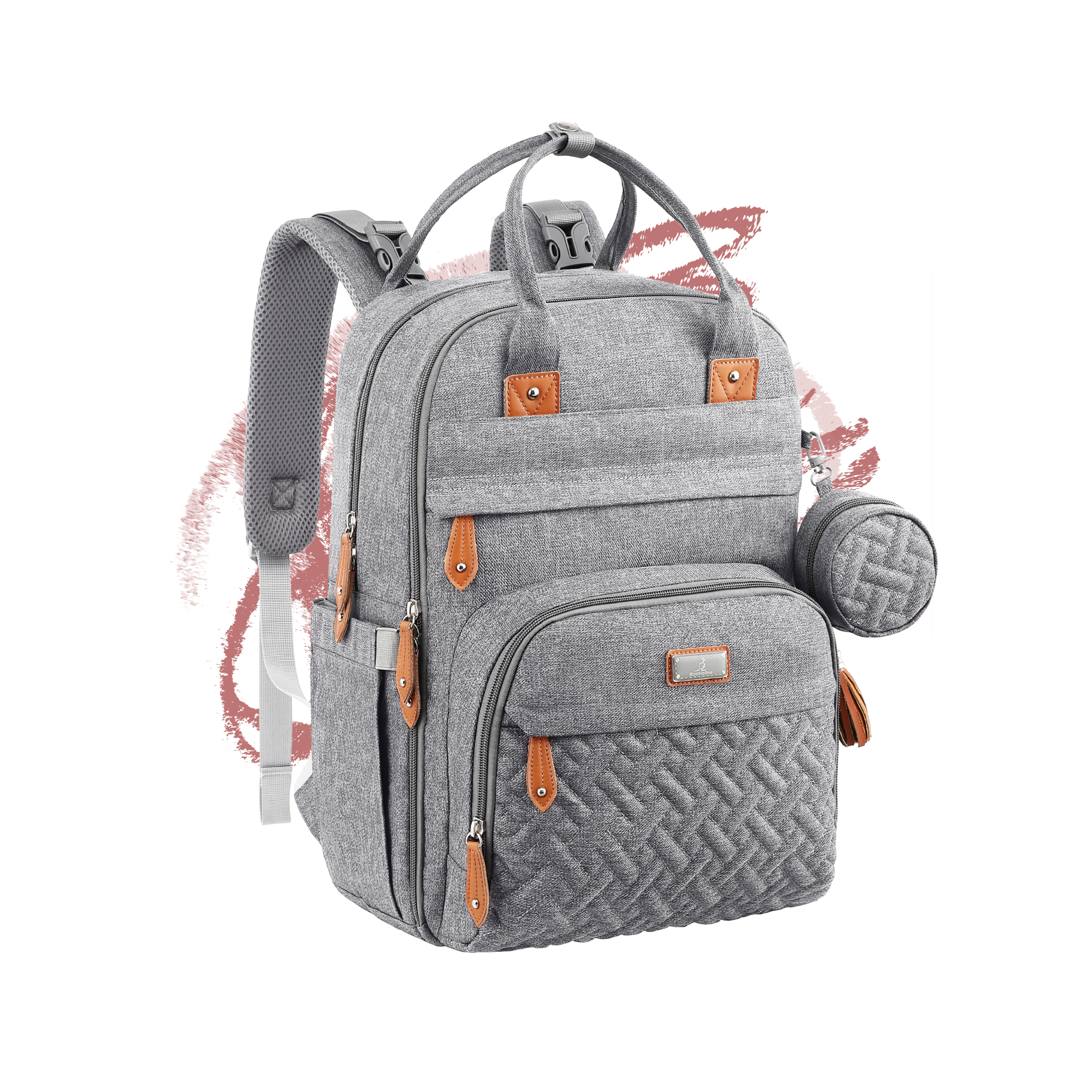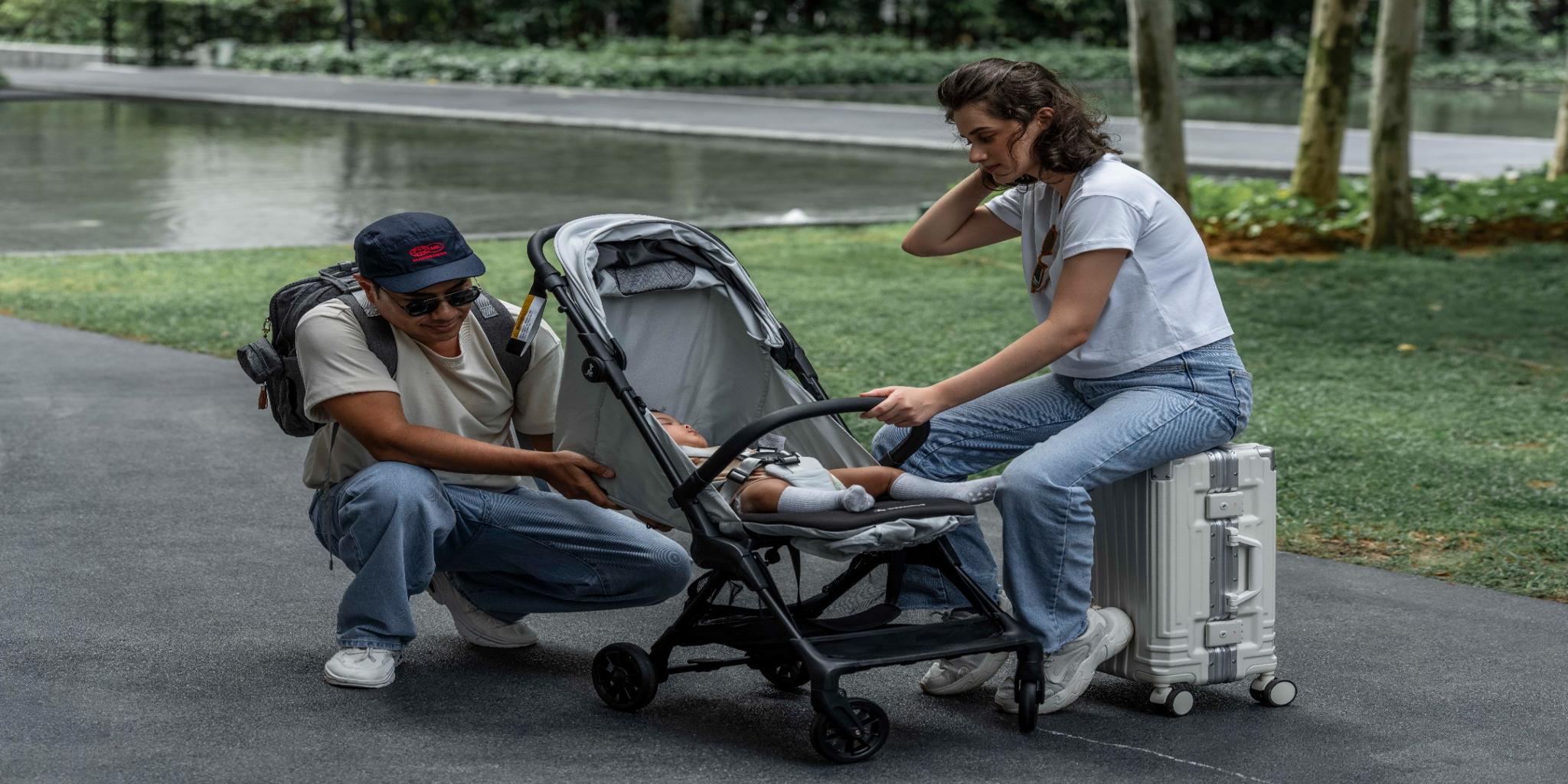The New Parent Reality
You thought leaving the house with a newborn would be simple. Then came the diaper blowouts right before you were ready to go, the car seat puzzle, and the mountain of stuff you apparently need for a 20-minute errand.
Suddenly, your stroller isn't just gear - it's your lifeline. And if it's bulky, heavy, or impossible to fold one-handed? That lifeline feels like another meltdown waiting to happen.
That's why new parents are turning to compact strollers: lighter, simpler, and designed to keep up with the chaos.
Newborn vs. Growing Baby: What Changes
First 6 months: Full recline essential, lots of gear to carry, extended outings for naps.
6-12 months: More upright time, snacks become crucial, mobility increases
Toddler stage: Independence features matter, weight capacity becomes relevant, nap time flexibility still needed
What Makes a Good Compact Stroller for New Parents
When you're stroller-shopping with a newborn, every brand promises their stroller is "perfect for parents." Here's what actually matters in your new reality:
1. Newborn-safe from day one: Most "lightweight" strollers need expensive bassinet attachments or aren't safe until 6 months. You shouldn't have to wait half a year or buy extra gear to use the stroller you just purchased.
2. Light enough to manage alone: You'll be solo parenting more than you expect. When your partner isn't there, lifting a 25-pound stroller in and out of the car while holding a baby becomes impossible fast.
3. Folds without a PhD: Complicated fold mechanisms mean you'll avoid using your stroller. If it takes more than 5 seconds or requires two hands, it'll stay home.
4. Actually fits your life: Trunk space, apartment storage, and doorway width matter more than you think. Measure before you buy.
5. Grows with your baby: If you're buying a stroller that only works for 6 months, you're buying twice. Look for newborn-to-toddler capacity (birth to 55 lbs maximum).
6. Storage you'll actually use: That diaper bag? It's coming with you everywhere. Your stroller's basket needs to hold it plus groceries, or you'll be hanging bags off the handles and tipping the whole thing over.
The costly truth: Most new parents buy 2-3 strollers because their "lightweight" choice isn't newborn-safe, and their "newborn" stroller is too heavy for daily use.
One Stroller That Actually Lasts: The BabbleRoo HopLite
The only ultralight stroller that's truly newborn-safe. No waiting, no add-ons, no buying a second stroller in six months.
The Stroller That Is Compact and Newborn Compatible: The HopLite
- 12.3 lbs but newborn-ready - Built-in footwell and 175° recline means safe from birth, no accessories needed.
- Birth to 50 lbs - Use it from hospital to preschool (0-36 months)
- One-hand fold - Actually works when you're holding your baby
- Shoulder strap included - Carry it like a bag when you can't push it
- Real storage - Basket holds your diaper bag plus groceries without tipping
- Everything included - Rain cover, travel bag, cup holder (no surprise purchases later)
One purchase, years of use. That's the difference.
Tips for Choosing Your Compact Stroller
Every family's version of "compact" looks a little different. Ask yourself:
- Do you live in the city and need a stroller that can weave through tiny cafés?
- Do you travel often and need overhead-bin size?
- Do you want a stroller that handles both newborn naps and toddler tantrums?
Make a checklist of your non-negotiables, read reviews, test-drive a few (literally). If it feels like a fight to fold it, lift it, or push it through a doorway? Skip it.
Parenting isn't neat or predictable. Your stroller shouldn't add to the chaos, it should make getting out the door feel possible.
Because with a newborn, "easy" doesn't exist. But "easier"? That's worth everything.
Read more

Why Traveling With Kids Feels Like a Mission Traveling solo? You grab your bag and go. Traveling with a baby? A whole different story. Suddenly you're packing a week's worth of diapers "just in cas...

The Pre-Flight Reality Check Your first flight with a baby feels like planning a small expedition. Between figuring out what you can bring through security, wondering if your baby will scream for t...

